All about white lavender
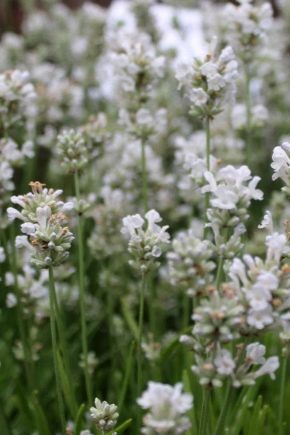
Knowing everything about white lavender, about what varieties are white, gardeners expand their capabilities and can successfully solve the problems of gardening. In addition to describing white lavender, you should also pay attention to the seeds of the plant. Finally, you need to learn the nuances of planting and grooming.

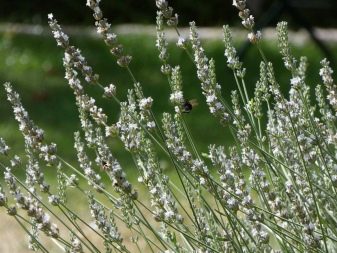
Varieties
There are many varieties of white lavender, and first of all, attention should be paid to the type Elegance Snow... These are evergreen bushes, giving shoots up to 0.3-0.4 m in height. The foliage of such a plant is noted in a gray-green color. The roots have a fibrous structure. White flowers exude a pleasant aroma. Bud formation takes place from mid-July. It will last approximately 20-25 days. By the very end of summer, fruits resembling nuts will ripen.
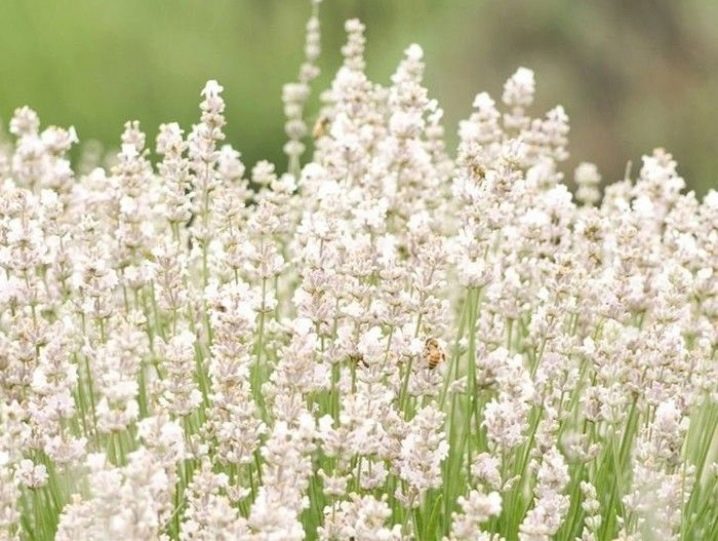
Lavender is also attractive. "Nana Alba"... It is often called the narrow-leaved variety. The bush of this variety is compact and lacks a central shoot. In the lower part, the stems are half lignified. A silvery-gray leaf color is typical. The root complex is built according to the pivot scheme. "Nana Alba" also bears fruit in the form of nuts, and it will bloom in the middle of summer.
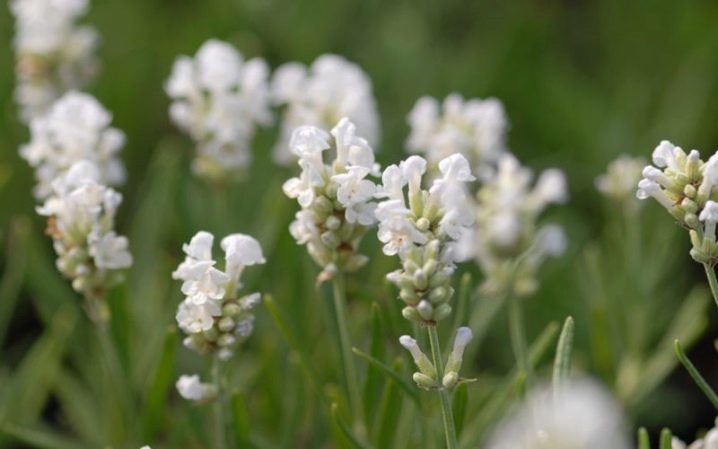
It is useful to pay attention to the description of broadleaf lavender. Snowman... This culture has a fairly high growth. Peduncles sometimes grow up to 0.5 m. They can be divided into a number of branches. The inflorescences reach 10 cm in length, they are distinguished by a strong aroma with camphor notes. Flowering usually begins in June, but may recur in late summer.
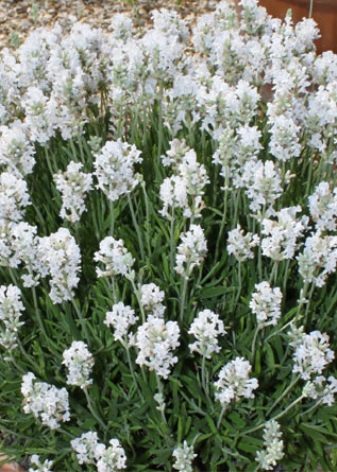
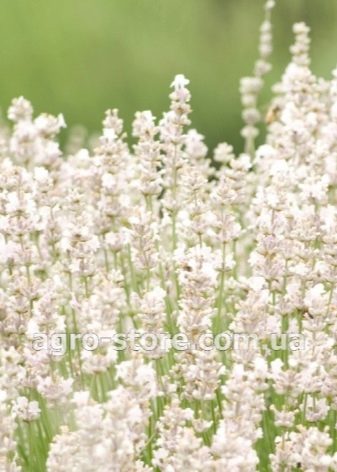
Important: regardless of the variety, it is almost impossible or extremely inconvenient to use seeds for cultivating lavender.
In general, narrow-leaved types of culture prevail. Lavender is a good example. "Aroma white"... It produces short, compact bushes. Their height and width are equally about 0.3 m.
Other features:
- green foliage;
- expressive sweet aroma;
- flowering from the end of July.
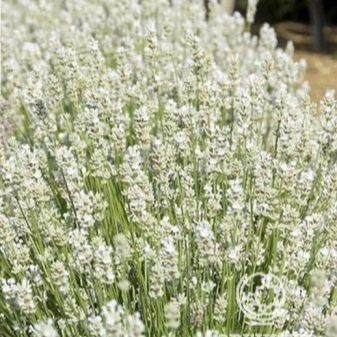
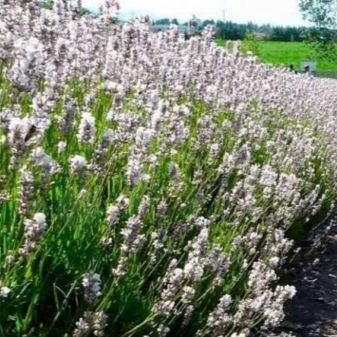
Lavender "Arctic snow" highly prized because its bushes do not fall apart. Shoots can reach a height of 0.5 m. The gray-green leaves look very good, they, like other parts of the plant, are nourished by the taproot. The flowers are distinguished by an attractive aroma, and the inflorescences will be about 5 cm high. Flowering can last about 30 days under favorable conditions.
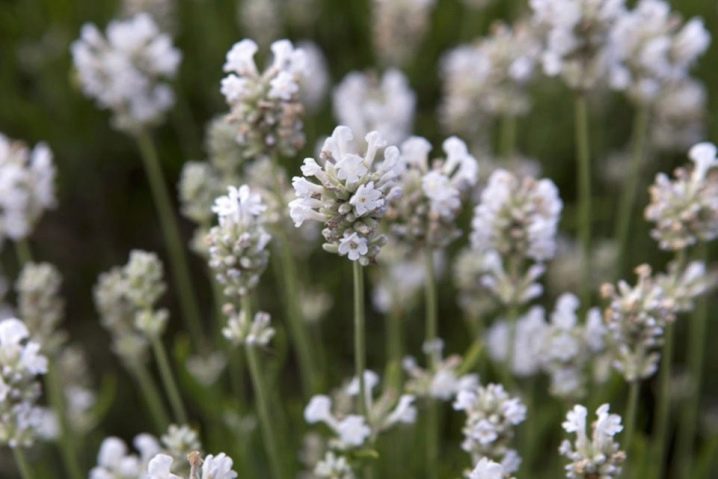
Higher lavender "Edelweiss"... It can reach 1 m and form dense bushes. The foliage is characterized by a gray-green color. The flowers are clearly grouped into inflorescences, and flowering occurs mainly from mid-July to mid-August. In the course of it, a subtle, enchanting aroma appears.
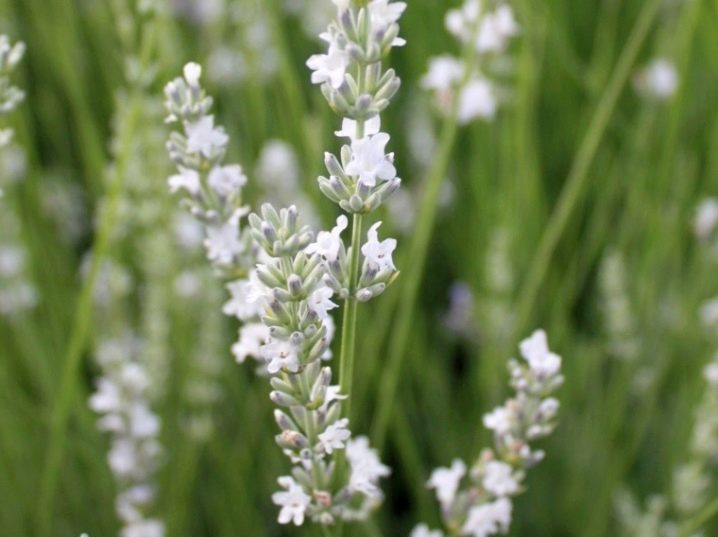
Planting and breeding
In the middle lane and to the north of it, it is possible to grow mainly frost-hardy narrow-leaved lavender. But this nuance is not reflected in the peculiarities of reproduction. Any type of lavender is bred mainly on a vegetative basis. Rooting of cuttings and cuttings is equally good. It must be understood that in this case only the plant of the original variety and species with a limited number of offspring is obtained.
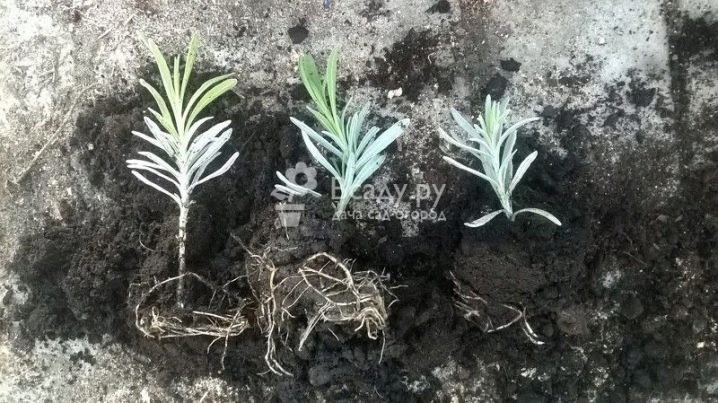
Seed propagation is a little more labor intensive. This solution is used mainly for breeding new varieties. It is also attractive in that you can get a large number of copies. It is recommended to purchase planting material only from firms proven in practice. It must be remembered that too cheap seeds rarely give good results.
Do-it-yourself collection of seeds is allowed.To do this, collect well-blossomed inflorescences (on self-grown or purchased additionally). Seed planting material is able to preserve germination for about 4-5 years. True, for friendly seedlings, it will be necessary to fulfill the key norms of agriculture. Lavender seeds require stratification, and in a cold way and for a very long time.
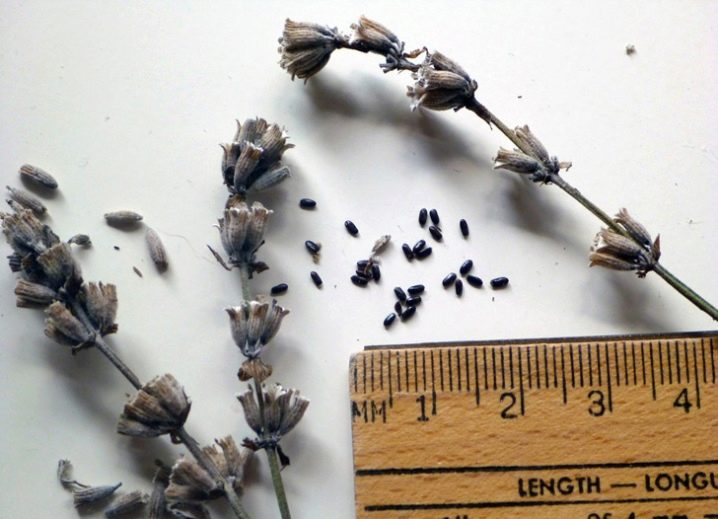
Artificial stratification is often used when the planting material is kept in the cold. The natural option implies sowing just before winter, when the cooling is already in the ground itself. In both cases, the procedure takes at least 40 days. If it takes 45 days or longer, it will only get better. There will be more seedlings, and they will germinate sooner.
If an artificial stratification technique is chosen, then it is most correct to stir the planting material in sand or other similar substrate instead of laying out in packages. The container is wrapped with foil or closed with a lid. The temperature in the refrigerator should be about 5 degrees above zero. Important: freezing is absolutely unacceptable. In some cases, instead of classical stratification, already planted seeds are scalded with boiling water, the use of phytohormones or growth stimulants is also practiced, but these methods are no longer very reliable.
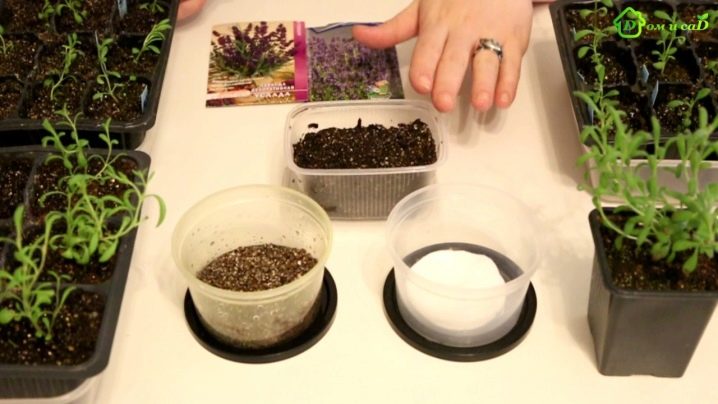
Sowing directly into the ground is carried out in the last 5-7 October days. Excessive burial of seeds is not allowed. But mulching of plantings is encouraged. It must be remembered that the first shoots appear not earlier than the May holidays, and sometimes closer to summer. In the earlier period, nighttime temperatures for lavender are low.
Spring sowing in open ground is carried out in the last third of the season. It is imperative to make sure that the danger of return frost has passed. Artificial stratification in this case is still required. Experts advise using versatile loose substrates saturated with nutrients. It is advisable to pre-calcine them or treat them with potassium permanganate.
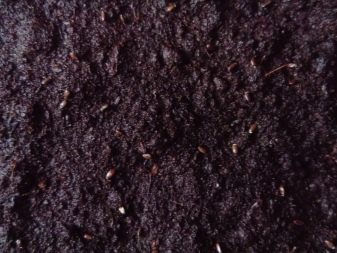

Important: Lavender is not suitable for planting in cassettes. The greatest depth of the tank reaches 70 mm.
The width of the container is more important than its depth. Seedlings should be started at the end of winter or in the first 2 weeks of March. It is recommended to spray the earth in containers from above from a spray bottle. There should be a gap of 15 to 20 mm between the seeds, and a layer of sifted earth with a thickness of 2-3 mm is placed on them.
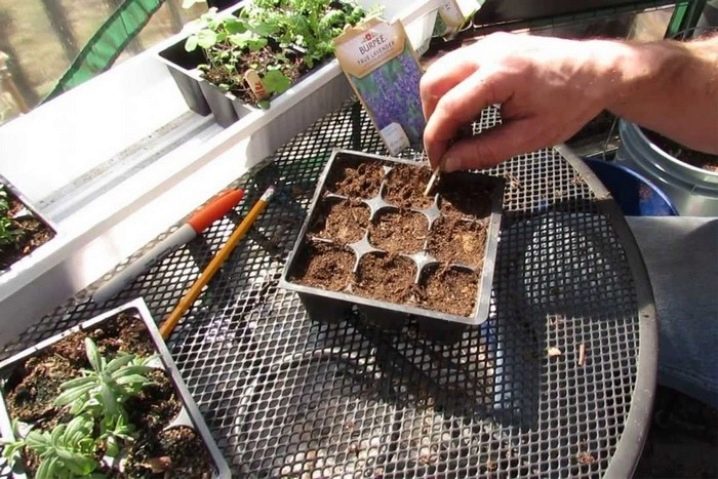
Care
Once the seeds are planted, the containers should be covered with foil or glass sheets. Seedlings germinate effectively in bright light and at temperatures from 15 to 21 degrees. Up to the formation of shoots, the soil should be sprayed in the morning, and during the day - systematically ventilated. Excessive moisture is extremely dangerous.
It is necessary to remove the cover of the container after pecking the seedlings. Moderate humidity should be maintained further. Young shoots are kept at the lightest point. Sometimes they light up with lamps for up to 8-10 hours. The dive is carried out at the beginning of the development of 3-4 full-length sheets.
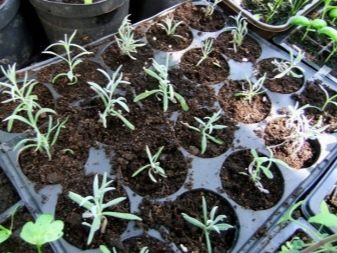

Lavender plantations require abundant watering. Mulch should be used immediately after planting. Its layer is kept stable in thickness, however, a direct supply of mulch to the base of the bush is unacceptable. Weeding in the first year of development should be done regularly.
In the same year, it is undesirable to allow the plant to bloom. To exclude this process and especially the formation of seeds, the inflorescences will have to be cut off immediately after the buds are dissolved. In the second season of development, about 1/3 of the inflorescences are left. For 3 years and beyond, lavender does not require such efforts. The roots of the plant require a thorough access of air, therefore it is difficult to do without mulching with foliage at any stage of a flower's life.








































































































The comment was sent successfully.